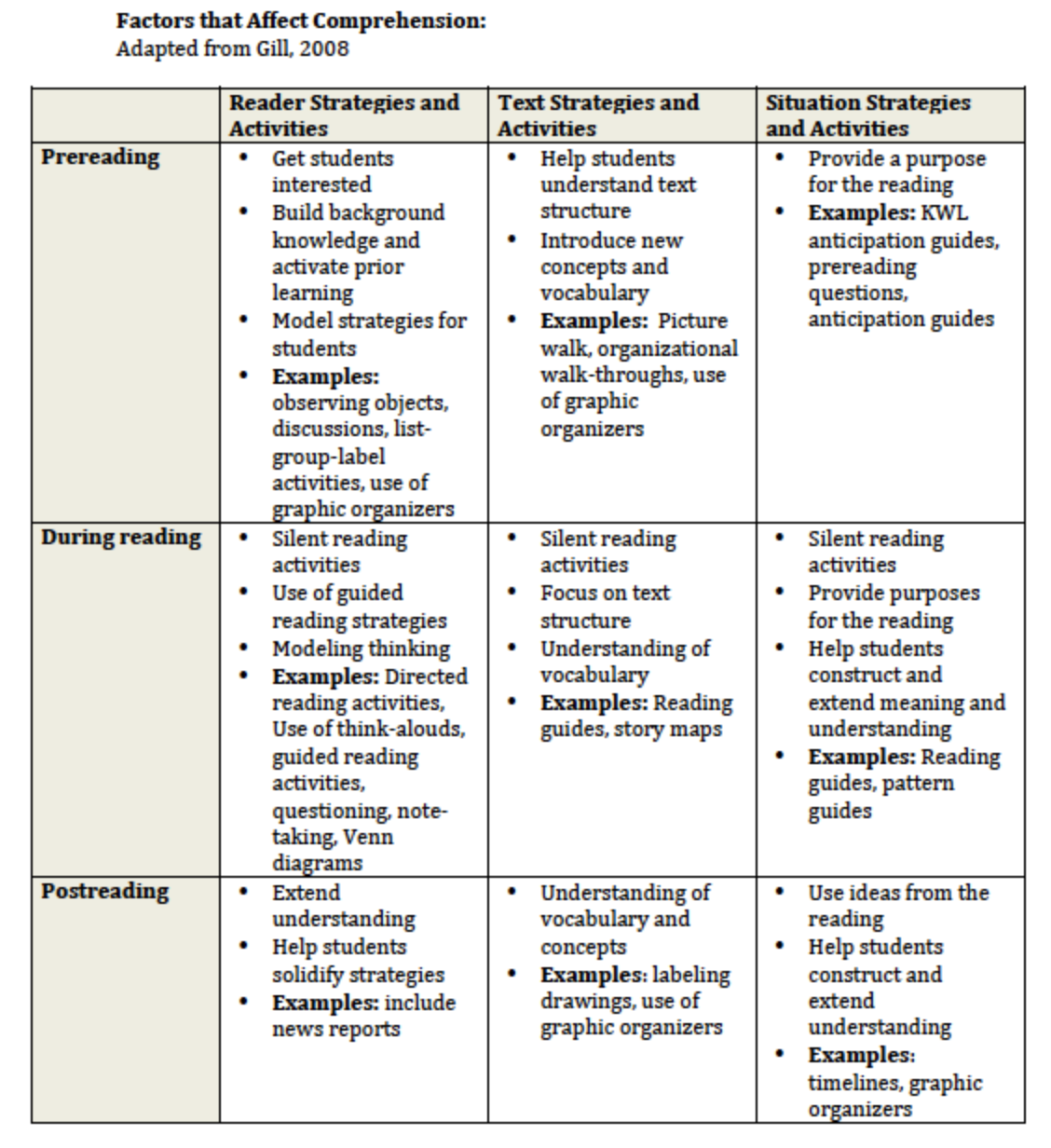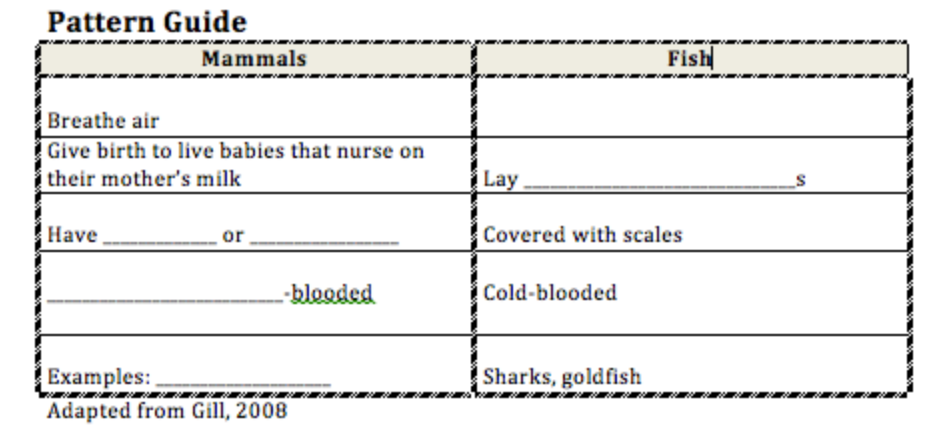Reading and ELLs
3. Designing Comprehension
The reader, the text, and the reading situation are among the most crucial factors that affect comprehension (Gill, 2008). Reader interest, background knowledge; text layout and organization, vocabulary, and the purpose that drives the reading event are all factors that contribute to comprehension of print. From the earliest reading stages, it is crucial that students know and understand how to successfully navigate text. Among the most important considerations are reader, text and situation:

Reader: interest, emotional state, physical state, strategies known, background knowledge, self-image
Text: layout, style, organization, vocabulary, concept load, illustrations
Situation: reading purpose, activities that aid in constructing and extending understanding
Below is a matrix that underscores each element and its relevance to prereading, during reading, and post-reading:
Activating prior knowledge: (Materials that support these bullet points can be found in the Course Objectives | Research | Materials folder.)
- Generating questions while reading
- Visualizing the text
- Summarizing
- Analyzing structure of stories
Prereading Strategies:
- Use of charts
- Use of graphs
- Labeling
- Use of KWLs to activate prior knowledge
- Anticipation guides
- Setting purposes for reading
During Reading Strategies and Activities:
- Directed Reading-Thinking Activity or DRTA
- DRTA Word version
- Asking questions
When planning for instruction, the following self questions are recommended:
- What do my students already know about this topic?
- What specific terms or concepts do they need to understand before we can move on?
- How can I get my students interested in this topic?
- What purposes can I provide them for the reading?
- What purposes can I help them establish of their own for the reading?
- What activities will help my students engage in this text?
- What strategies do my students need to learn to be independent readers?
- How can I help students expand their vocabulary to understand the text concepts?
- What strategies can I model for them? (p. 111)
Designing comprehension involves planning. For example, creating an anticipation guide to ask students prediction questions, asking students whether statements are true or false. Here is one example prior to the teaching of whales:
The teacher identified the major concepts students needed in order to understand the text. He found that the difference between fish and mammals would be important to understand, and created a pattern guide as a during-reading activity to aid their understanding of the differences between fish and mammals (Gill, 2008).
Pattern Guide:

Gill, S. R. (2008). The comprehension matrix: A tool for designing comprehension instruction. The Reading Teacher, 62(2), 106-113.